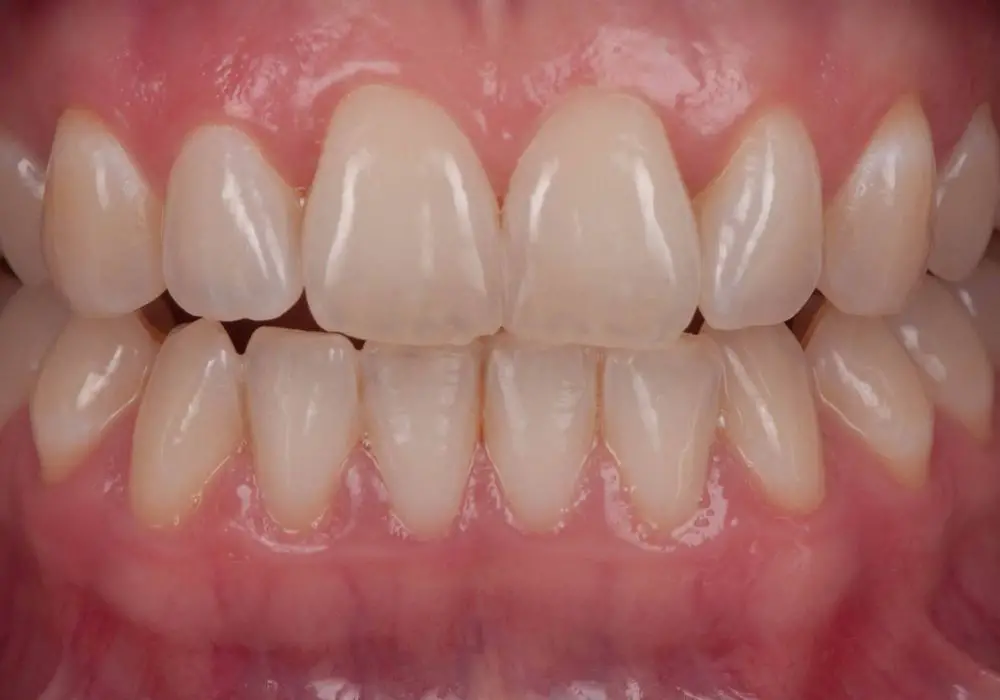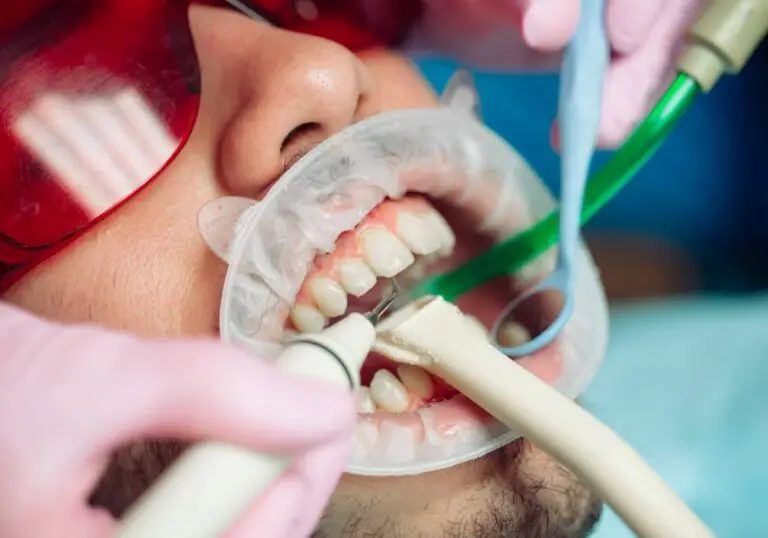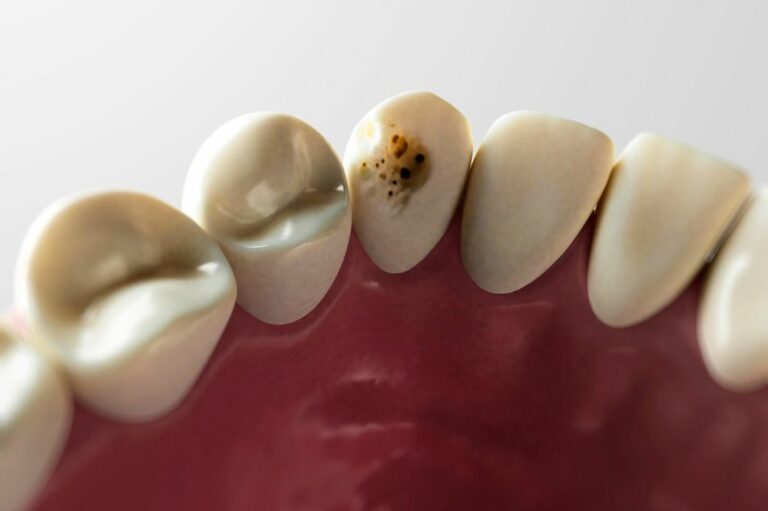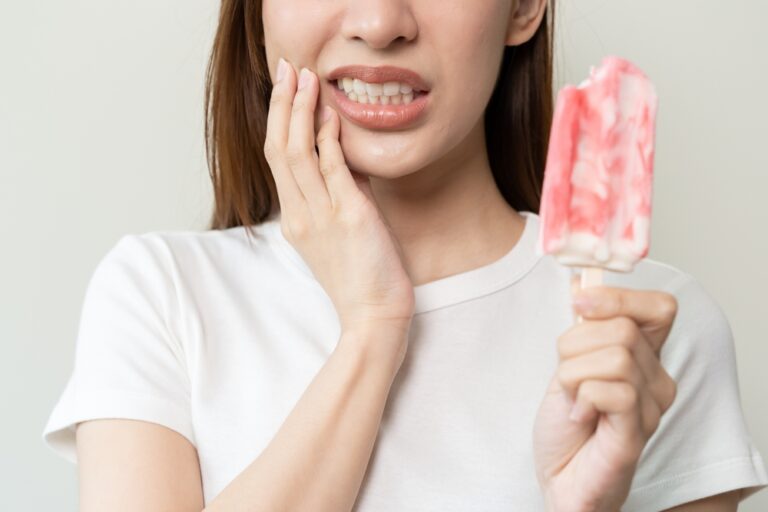You glance in the mirror and notice your front teeth look slightly see-through and translucent around the edges. This gradual change in your tooth appearance likely raises some questions and concerns. Why are my teeth starting to look transparent? Is this normal? What’s causing it? Below we’ll explore the common reasons teeth can become see-through and what options exist to improve this condition.
What’s behind the change in tooth appearance?

There are several key factors that can cause your tooth enamel to thin and take on a transparent look over time:
Age-related enamel loss
As we age, the enamel covering our teeth naturally begins to wear down and erode. Enamel is the hard, mineral-rich outer portion of the tooth. It gives teeth their normal white opaque color. As enamel thins with age, it loses some of its minerals and its structural integrity declines. This causes it to become more translucent, allowing more of the yellowish dentin underneath to show through. This is why older adults often develop translucent teeth around the biting edges and cusps.
Acid erosion
Frequent exposure to acidic foods and beverages wears away enamel over time. Items like citrus fruits, tomatoes, vinegar, wine, soda, fruit juice, and sports drinks all contain acids that leach minerals from tooth enamel. Each acid attack removes tiny amounts of mineral content from the enamel, leaving it thinner and weaker. As the enamel thins, translucency increases.
Grinding and chewing habits
Chronically grinding, clenching, or forcefully chewing your teeth puts excessive force on the enamel. This constant heavy pressure accelerates the erosion process, wearing down enamel quicker than normal. Hard or sticky candies, ice cubes, pencils, and more can all increase wear if chewed on aggressively. Nighttime teeth grinding is also a very common culprit.
Poor dental hygiene
Allowing plaque buildup to remain on your teeth encourages enamel erosion. The bacteria in dental plaque produce acids as waste products. These acids leach important minerals from enamel over time. Without proper daily brushing, flossing, and professional cleanings, plaque remains and slowly thins enamel.
Genetic or developmental factors
Some individuals have naturally thinner enamel or differences in enamel structure or mineral content. This can make them more predisposed to erosion and translucent teeth at an earlier age. Developmental conditions like enamel hypoplasia can also affect thickness.
When is enamel transparency a concern?
Mild to moderate transparency concentrated at the biting edges of back teeth is often a normal part of aging. Our enamel does wear down a bit over time, exposing more of the underlying yellowish dentin near the edges and cusps. But moderate to severe thinning and transparency in a younger adult is not normal. This usually indicates other factors are accelerating enamel loss.
Translucent teeth are also of greater concern when they involve the front visible teeth. As the thin enamel wears, it can expose unsightly dark dentin near the gum line and cause pitting and fraying. This worsens appearance.
Problems caused by enamel thinning

Thinning, eroded enamel not only affects the look of your teeth, but also makes them more vulnerable to damage in other ways:
- Tooth decay – Weakened, porous enamel allows more oral bacteria to penetrate and attack the tooth structure below. This kickstarts tooth decay.
- Temperature sensitivity – Enamel thinning exposes tiny tubules in the inner dentin layer. Exposure to hot and cold drinks and food then triggers painful sensitivity in these unprotected tubules.
- Chipping and fractures – Worn enamel is more prone to chipping, fracturing and cracking from things like chewing hard foods or trauma to the mouth.
- Tooth wear – Loss of enamel also exposes the softer dentin underneath. This leads to accelerated wearing as the unprotected dentin grinds down faster than enamel normally would.
Options for improving tooth transparency
If you’re unhappy with the increasing translucency and thinning enamel of your teeth, these options can help restore a more youthful, opaque appearance:
- Dental bonding – Your dentist applies a thin layer of tooth-colored composite resin material directly onto the front surface of the tooth. The resin bonds to the existing enamel and covers over areas of translucency.
- Porcelain veneers – These thin, custom-made porcelain covers clip onto the front of teeth. Veneers conceal translucency and can also improve color, shape, and alignment.
- Dental crowns – Crowns are tooth-shaped caps designed to fully cover teeth. They offer the most complete restoration for transparency and damage. However crowns require filing down the natural tooth first.
- Enamel microabrasion – This polishes away the outermost layer of enamel to remove thin, translucent areas around the gum line. It provides moderate improvement but doesn’t restore lost enamel thickness.
Steps to prevent your enamel from thinning further
While the above can cosmetically conceal existing thin areas, it’s also important to prevent your remaining enamel from eroding further:
- Reduce consumption of acidic foods and beverages
- Rinse mouth with water after having acidic items
- Avoid chewing on hard items like ice or pencils
- Use remineralizing toothpaste and fluoride products
- Address teeth grinding with night guards and other therapies
- Maintain excellent oral hygiene with proper daily brushing and flossing
- Get more frequent dental cleanings if you have fast buildup of tartar or decay
Following these steps minimizes the risk of your enamel growing thinner and weaker over time. This helps preserve the healthy enamel you still have.
Key Takeaways on Tooth Transparency and Enamel Loss
- Aging, acidic erosion, grinding, and poor dental hygiene thin out enamel
- Thinned enamel takes on a darker, transparent look around the edges
- This exposes more yellowish dentin and worsens tooth appearance
- It also increases risk of decay, sensitivity, fractures, and wear
- Options exist to mask transparency like bonding, veneers, and crowns
- Preventing further enamel loss through diet, habit changes, and hygiene is key
Frequently Asked Questions on Transparent Teeth
Why do my teeth appear see-through on the edges all of a sudden?
Sudden onset of pronounced transparency likely indicates an accelerating factor is actively eroding your enamel. Causes might include increased consumption of acidic foods/drinks, beginning to grind your teeth at night, more frequent chewing on hard items like ice or nails, or a major drop off in your oral hygiene routine allowing plaque buildup. See your dentist promptly to identify the cause.
Is there any way to regenerate enamel once it has worn off?
Unfortunately, lost enamel cannot be regrown or regenerated once it’s worn away. Enamel regeneration is an active area of research, but current technology focuses on restoring existing enamel rather than replacing lost enamel. However, steps can be taken to preserve and remineralize your remaining enamel.
Can I conceal transparent front teeth with whitening treatments?
Whitening treatments like gels, strips or trays are not effective for masking existing transparency. They only remove deep intrinsic stains, but don’t address enamel loss. Options like dental bonding or porcelain veneers are better for concealing transparency, as they cover over thinned areas with an opaque material.
How do I know if transparency is just age-related versus a sign of decay?
Age-related transparency is usually confined to the biting edges and cusps of back teeth. Transparency near the gum line and on front teeth is more indicative of excessive erosion from poor hygiene or acids. Decay also causes white spot lesions whereas age-related transparency is a gradual overall thinning. Evaluate your risk factors and habits along with transparency location to determine the cause.
My teeth seem transparent after my braces were removed – why?
Braces can sometimes lead to areas of enamel thinning along the gum line. Friction from the wires combined with plaque retention around brackets creates acidic conditions. If your orthodontist doesn’t address it, this can leave visible areas of translucency once braces are removed. Ask your dentist about options like enamel microabrasion or bonding to improve the look.
In summary, tooth transparency is often an expected part of aging. But more pronounced translucency at a younger age demands attention to identify the cause. Taking prompt action by addressing habits, diet, and oral hygiene can help remineralize and preserve enamel before it requires cosmetic restoration. Being proactive helps maintain the structure and appearance of your natural teeth.







